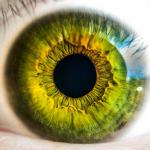When a woman comes to the store for shampoo, it is difficult for her to immediately decide on a purchase, and she wanders along the shelves for hours, sorting through dozens of options. So many radio amateurs, taking up the assembly of a home-made UMZCH, can choose for a long time among a wide variety of circuits and microcircuits. This is weak TDA2282, and simple TDA1557, and serious TDA7294, and expensive STK40... The choice provided by manufacturers of specialized audio integrated circuits is very large. Which one to stop? We offer an option that is rightfully considered the golden mean in amplifier building - the TDA2050 chip (), which, at a price of a couple of tens of rubles, will provide us with an honest 30 watts of power. That in the stereo version is already 60 - it’s quite enough for an apartment.
Amplifier circuit for self-production
A printed circuit board has been developed for this device, which is suitable for TDA2050 or LM1875 and has all the necessary components - power, speaker protection, turn-on delay and quick turn-off. This is achieved using a convenient but unpopular UPC1237 chip in domestic markets. If it is not possible to buy it, simply remove all the elements of its binding from the circuit, starting from resistors R12, R13. Then, in the matter of protection, you will rely on the UMZCH microcircuits themselves, which have thermal and short circuit protection. The truth is not very reliable. Yes, and clicks when turned on from the speakers are possible. The parameters of the amplifier itself are described in detail in the documentation.

M / s TDA2050 and LM1875 are completely interchangeable, the differences in their circuits are only the values of a pair of resistors and one capacitor.

All this allows you to make a universal printed circuit boardsuitable for any of these two microcircuits.

Power supply
The UMZCH itself is 2x30 W, but the power depends on the supply voltage and the resistance of the speakers connected to the output. If you have not found a transformer capable of providing the specified bipolar power supply (2 to 17 V), it does not matter. The circuit can also work from low voltage, for example, 2 to 12 V. In this case, the power will simply drop proportionally. But such a transformer is easier to find - you can even take two standard ones, 12 V each, and connect their output windings in series.

As for all kinds of timbral blocks, as practice has shown, this is an unnecessary complication of the circuit, which is fraught with unnecessary noise. You can also change the frequency response on a computer (phone). Here, the usual volume control is enough. And, as an option, channel balance.
Box for homemade amplifier

The case in our case is plastic, with front and rear walls in the form of 1 mm metal plates. You can take absolutely any box that is suitable in size and design, even plastic (easier to process and drill), even metal (anti-interference and strength).

All connectors are standard - 220 V mains, RCA inputs and "pedal" outputs for acoustic systems. Pay special attention to the resistor for the volume control. Before putting it in the ULF, just plug it in and listen for rustles and crackles from the speakers when you turn the knob.
Discuss the article HOW TO MAKE AN AMPLIFIER WITH YOUR HANDS
Many owners of smartphones and tablets have a problem with sound, or rather its insufficient volume. Unfortunately, by software, it is very rarely possible to solve it. Therefore, you need to apply a method that is quite simple and budgetary in order to make a simple electronic device that will increase the power of your device. Then you can listen to your favorite music and watch videos at normal and even very strong volume.
This video tutorial will show the simplest sound amplifier that anyone can make, even a schoolboy who has never picked up a soldering iron. Its circuit, suitable for a mobile phone, consists of the simplest components. When the amplifier is ready, you can improve the sound quality by using . How to do it is shown in a separate video on the site.
In the same article, we will talk about an amplifier to which you can simply connect a speaker, or use the idea, as mentioned above.
Sound amplifier circuit on the lm386 chip

What do you need to build an amplifier?
First, we need a crown connector, a crown of 9 volts, one speaker, a power of 1 W and an impedance of 8 ohms. In addition, you also need one 3.5 mm mini-jack, one 10 ohm resistor, a switch, an LM386 chip and one 10 V and 220 MF capacitor. The diagram was drawn on a piece of paper.
 Phone amplifier circuit
Phone amplifier circuit As you can see, this chip contains four latches on each side, there are 8 latches in total. In order not to confuse and not turn the microcircuit upside down and solder it incorrectly, it has a semicircle-shaped notch. We need to put the chip so that this icon is on top and you can solder everything step by step.
You might notice that number 6 is the penultimate foot on the right, we will solder one wire to it. This wire must be tied to the switch, the second contact from the switch must be connected to the positive of the crown connector.
Next stage.
Contact number 5 is the last one on the right side. You need to solder a capacitor to it, which has two poles - plus and minus. How should we identify them? There is a zero with a black stripe - this is a minus, the other side is a plus. According to the diagram, we connect the plus with the last contact on the right.
Let's move forward. The minus from the capacitor must be soldered to the plus of the speaker. We are going to take a wire and lengthen the contact of the capacitor. Now solder the negative wire of the capacitor to the positive from the speaker. Next, we will attach the minus from the speaker to the 4th and 2nd microcircuit clamps. We will use a jumper between these legs of the microcircuit.
Now we need to connect the resistor. Solder the wire to its second leg. It is a plus from the mini-jack. If you disassemble it, you can see there are two contacts for the left and right channels. Connect them together and solder the red wire with which we extended the wire from the resistor. Minus, or, in other words, the mass from the mini-jack must be soldered to the minus of the speaker.
Finally, we just need to solder the negative of the crown connector to the negative of the speaker. We take the wire and solder to the minus of the speaker. That's all. It is very easy. You may have noticed that it took 5-10 minutes.

Now you can check the audio amplifier for mobile phones and smartphones.
This power amplifier is based on the PA100 detailed in the application from National Semiconductor's AN1192
When I assembled my powerful home-made 4-ohm speakers, the amplifier could not "shake" such a load, so it was decided to assemble a more powerful amplifier. I designed a power amplifier circuit that uses two LM3886s per channel in parallel. At an 8 ohm load, the output power of the amplifier is about 50 watts, at a 4 ohm load 100 watts. This amplifier uses four VLF LM3886 microcircuits.
By the way, Jeff Rowland uses the LM3886 in some of his Hi-Fi designs and has good feedback. So an inexpensive amplifier can also be of high quality!
The LM3886 chip is connected according to the non-inverting amplifier circuit. The input resistance of the ULF depends on the resistor R1 (47 kOhm). Resistor R20 (680 ohms) and capacitor C20 (470 pF) form a high-pass filter on the input RCA connectors. Capacitors C4 and C8 (220 pF) are used to filter the RF at the inputs of the LM3886 chip.
When assembling the amplifier, in some places I used high-quality capacitors: C1 (1 uF) "Auricap" for DC filtering, C2 and C6 (100 uF) "Blackgate" and C12, C16 (1000 uF) "Blackgate".
The circuit diagram of the amplifier is shown below.

The development of the printed circuit board was carried out taking into account the fact that the power ground (power supply) and the signal ground were separated. The signal ground is in the middle and surrounded by power ground. Near C5 they are connected by a thin path. The design of the printed circuit board was carried out in the PADS PowerPCB 5.0 program.


I did not make the printed circuit board myself, but gave it to the company. When I took it, I found that some of the holes were smaller in diameter than necessary. Drilled it out by hand. The photo below is a photo of the board.

The 1kΩ and 20kΩ resistors were manually selected with an accuracy of 0.1%. As output resistors, I used six resistors with a nominal value of 1 ohm 0.5 watts 1%, because it is problematic to find a 3-watt 1% resistor.

I used an isolated version of the chip - LM3886 TF, so I directly connected to the case and heatsink through thermal paste.

Separating capacitor "Auricap" 1uF 450V. A high quality capacitor was purchased as it is used in the main signal circuit.

Capacitors in the high-pass filter: "Silver Mica" 47pF and 220pF.

The power filter used a "Blackgate" 1000uF 50V capacitor

Conders C2 and C6 are also from Blackgate with a nominal value of 100uF 50V. For best result it is better to use bipolar capacitors, however, I used electrolytes, because. bipolar would not fit on the board.

The filter chain R20(680 Ohm) + C20(470 pF) is placed directly on the RCA connector. This helps filter out high-frequency noise before it reaches the amplifier board.

A 0.1uF power supply decoupling capacitor is soldered on the reverse side of the amplifier board directly to the LM3886 leg, this allows better filtering of high-frequency noise.

The LM3886 chip is planted on an aluminum radiator, and then to the amplifier case. On the outside of the case, I attached 3 more heatsinks from PC CPU fans. Thermal paste was used throughout for better heat dissipation.

With all these heatsinks, the amplifier heats up quite a bit at medium volume.

In the power supply, I used an LT1083 adjustable voltage regulator chip. Before it, I put capacitors with a capacity of 10,000 microfarads after - 100 microfarads. The advantage of using an adjustable voltage regulator is that there is virtually no ripple voltage. Without it, a small 50/100 Hz noise is heard.


Powerful MUR860 diodes were used in the diode bridges.

The LT1083 voltage regulator can provide current up to 8A.

The transformer was used with a power of 500VA 2x25V. After the stabilizer, the voltage is 30 volts.

In the future, I plan to replace the stabilizer with a more powerful one (see diagram below). The TIP2955 transistor is capable of withstanding currents up to 15A.

After assembling the amplifier, I measured the DC voltage and got about 7 mV offset on the speaker connectors. The voltage difference between the two IC outputs is less than 1 mV.
The sound of the amplifier is somewhat similar to the sound of the amplifier I assembled earlier on the LM3875 - very clean. No noise, no hiss, no hum. Compared to the LM3875 amp, this amp puts out about twice as much power into my 4 ohm speakers and delivers deep, punchy bass and good dynamics.
List of radio elements
| Designation | A type | Denomination | Quantity | Note | Score | My notepad | |
|---|---|---|---|---|---|---|---|
| ULF | |||||||
| U1, U2 | Audio amplifier | LM3886 | 2 | To notepad | |||
| C1 | Capacitor | 1 uF | 1 | To notepad | |||
| C2, C6 | 100uF | 2 | To notepad | ||||
| C3, C7 | Capacitor | 4.7 pF | 2 | To notepad | |||
| C4, C8 | Capacitor | 220 pF | 2 | To notepad | |||
| C5, C9 | electrolytic capacitor | 10 uF | 2 | To notepad | |||
| C10, C11, C13 | Capacitor | 0.1uF | 3 | To notepad | |||
| C12, C14 | electrolytic capacitor | 1000uF | 2 | To notepad | |||
| C20 | Capacitor | 470 pF | 1 | To notepad | |||
| R1 | Resistor | 47 kOhm | 1 | To notepad | |||
| R2, R3, R7, R8 | Resistor | 1 kOhm | 4 | To notepad | |||
| R4, R9 | Resistor | 22 kOhm | 2 | To notepad | |||
| R5, R10 | Resistor | 10 kOhm | 1 | To notepad | |||
| R6, R11, R13-R16 | Resistor | 0.5ohm 1W 1% | 6 | To notepad | |||
| R12 | Resistor | 2 ohm | 1 | To notepad | |||
| R20 | Resistor | 680 ohm | 1 | To notepad | |||
| Power Supply | |||||||
| U1, U2 | Linear Regulator | LT1083 | 2 | To notepad | |||
| D1-D8 | rectifier diode | MUR860 | 8 | To notepad | |||
| C1, C4 | electrolytic capacitor | 10000uF | 2 | To notepad | |||
| C2, C5 | Capacitor | 1 uF | 2 | To notepad | |||
| C3, C6 | electrolytic capacitor | 100uF | 2 | To notepad | |||
| R1, R2 | Resistor | 100 ohm | 2 | To notepad | |||
| R3, R4 | Trimmer resistor | 2.5 kOhm | 2 | To notepad | |||
| TX1, TX2 | Transformer | 220/25V | 2 | To notepad | |||
| Powerful Stabilizer | |||||||
| N1, N2 | Linear Regulator | LM317 | 2 | To notepad | |||
| V1, V2 | bipolar transistor | TIP2955 | 2 | To notepad | |||
| V3-V12 | rectifier diode | MUR1560 | 10 | To notepad | |||
| V13, V14 | rectifier diode | 1N4007 | 2 | ||||
Surely many would like to have a 5.1 audio system at home, but often the prices for such amplifiers are quite high. I will tell you how easy and not very expensive to assemble a 4-channel amplifier for such a system. After digging around on the Internet, I chose the easiest to assemble and not expensive amplifier of sufficient power. Namely, the amplifier on the rather popular TDA 1558Q chip By itself, this chip is already a ready-made 4-channel amplifier with a power of 11 W per channel, but this power will not be enough to get high-quality and surround sound, so we will connect it with a bridge method, it’s easier Speaking of which, we pair 2 channels and get a 2-channel amplifier with a power of 22 watts per channel. Thus, we take two microcircuits and as a result we get 4x22 watts. If the microcircuit is touched separately, then one of the advantages can be called the simplest circuit connection, not a high price and decent power with a small unipolar voltage, short circuit protection. overheating and incorrect power connection. Disadvantages: low efficiency of about 50% (High current consumption and high heating even in idle mode) Also, at peak power, the sound is cut off sharply and turns into a roar.
Now let's move on to the assembly and first get acquainted with the scheme.
The circuit is extremely simple and is assembled in 10-15 minutes, its simplicity allows it to be soldered by surface mounting, it is also worth recalling that the circuit has the thermal characteristics of an iron and it requires a radiator of approximately 600 cm2 area and either an open case or forced cooling in the form of a fan.
Here is the set of parts that I needed to assemble the amplifier.

I used two diode bridges for the reason that I used a transformer with two similar windings, usually one for 8 A is enough.
Separately, two 3.5 plugs were purchased to be included in the computer's audio card.

Now I think we can move on to actually assembling the amplifier. I didn’t have a ready-made power supply and I had to assemble it myself, and I recommend you do the same because it’s not easy to find ready-made power supplies with the necessary power reserve, since at a voltage of 17 V one chip consumes about 3 A even when it is “silent”. Also, if you turn off the 14th contact, then the amplifier will go into "Sleep Mode" and the current consumption will be reduced to a couple of hundred mA
And so, for starters, we will find a transformer of the required power, then you can solder the rectifier yourself, but I still advise you to take a ready-made diode bridge. We take and install it on a small radiator. (I didn't have a small one)

Then solder the capacitors

Since I also needed to install a transformer for another device, I decided to separate the PSU from the amplifier itself.


Since I used this amplifier for a home computer, I decided to “link” turning on the amplifier with turning on the computer, how to do this is described in this article () I went the wrong way in the article, I connected the relay to the yellow and black (12 V) wires coming from The power supply unit of the system unit and brought out the wire from it to the power supply unit of the amplifier. I also want to say that the higher the voltage, the better the sound at high volume, but the heating also increases accordingly, the optimal supply voltage is 15 V, when the threshold of 17 volts is exceeded, the amplifier goes silent (For that time, the voltage is exceeded) so if there is no sound, measure the voltage.
Now let's move on to assembling the actual amplifier itself. Since the circuit for switching on the microcircuit is primitive, it probably cannot be simpler, I decided to solder everything by surface mounting.
To begin with, we attach the microcircuits to the radiator; it is first recommended to coat the junction with thermal paste

After that, looking at the circuit, we bend the necessary contacts (14, 5, 13 - Plus power. 3, 7, 11 - Minus power. Etc.) Extra contacts can be bitten off so that they do not interfere.

After you have soldered all the necessary wires and capacitors, you need to get rid of the unreliability of “fragility” (for surface mounting), I recommend using hot melt glue to carefully pour the contacts in such a way as to avoid a short circuit between them.

In fact, the amplifier as such is ready. it is now fully functional. But I strongly doubt that someone will be ready to decorate their table with such a piece of iron. And that's why you need a case, it all depends on your imagination, I just took the case from a broken drive.
To begin with, I fixed the plug from the disc tray with the same hot glue and glued my LED.

The amplifier is ready. I did not set the volume and balance controls for the reason that now even the most budget audio cards are equipped with excellent software for these purposes.
If you touch the price, then everything here is not very expensive.
1. Microcircuits TDA1558Q - 80 rubles. 1 PC.
2. Capacitors (0.22 microfarad 4 pcs. 0.1 microfarad 2 pcs.) 35 rubles. for all
3. Capacitor 25V 6800uF 38 rubles. 1 PC.
4. Thermal paste 40 rubles.
5. Diode bridge 1000v 8A 20 rubles.
Everything was bought in specialized shops of the radio market.
Good luck to those wishing to repeat!
We make a simple sound amplifier with our own hands. We will need the following:
1) Coil: L1 5uH
2) Resistors: R1, R3 2.2 kOhm; R2, R5 22kΩ; R4 680 Ohm; R6 2.2 ohm; R7 10 Ohm.
3) Capacitors: C1, C4 - 4.7uF-25V; C3-22uF-25V; C3-22uF-25V; C5-0.47uF-25V; C6,C7-1000UF-35V.
4) Chip: DA1 TDA2050
Also, for soldering, you need to purchase: a ceramic soldering iron, solder, fiberglass, ferric chloride, flux (rosin), speaker (to check the amplifier’s performance), 10 V power (“krone”), wires, connector, radiator (at first, the microcircuit will not heat up strongly, but it is still recommended to put cooling), glossy photo paper.
Now the fun part, getting ready. Here is the diagram of our device:
Now we need to make the layout, which is easiest to do in the sprint layout program. After the wiring is ready, we print our wiring on photo paper (the printer must be a laser printer!). Then we put the printed fragment on our board and iron it for 5-10 minutes. Then we lower it under water and with light movements we clean off the paper. Now we need to pickle the board. To do this, we take ferric chloride and add it to slightly warmed water and dip the board there (in no case do not use dishes intended for eating!) The etching process takes from 10 minutes to 5-8 hours, it all depends on the amount of solution and temperature water. After the board has been etched, we clean off the paint layer, as a result of which our tracks will become copper. Now we have to solder the elements. To begin with, we will drill holes for our elements, after which it is recommended to lubricate the tracks with flux. After that, according to the scheme, we insert all the elements and solder them. On this, our work enters the final stage, a performance check.



By connecting power, speaker and connecting the jack to a device with a 3.5 mm jack, you will hear your favorite music. For convenience, you can come up with a case for your device, you can see an example of a case below.





